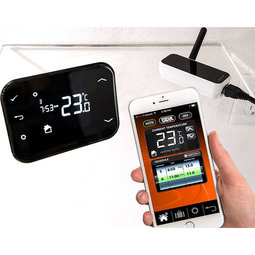Search Result.
Case Studies
10
 |
Remote HVAC Control System (SALUS Controls)
In Europe, most homes are heated via hot water radiators, not HVAC systems as is popular in the United States. Current European heating systems suffer from two shortcomings; wiring the thermostat to the water source, and limited Wi-Fi range in older homes. |
|
IoT-Enabled Predictive Maintenance for HVAC Systems
The company, a leading manufacturer of heating, ventilation, and air conditioning (HVAC) systems, was seeking to leverage the Internet of Things (IoT) to enhance the capabilities of its large-scale HVAC systems. These systems are typically installed in large developments such as college campuses, commercial office buildings, and hospitals. The company was particularly interested in enabling predictive maintenance, as servicing major HVAC systems is expensive and a prolonged outage can cause significant disruption. However, implementing a predictive maintenance system involves building out a complex IoT architecture. A large number of sensors and devices have to be connected to a centralized management system. The company may have hundreds if not thousands of HVAC assets in the field, all of different types and models. These devices may be spread over different regions, which means managing and negotiating with multiple network operators. To enable remote monitoring, there also has to be a stable and secure connectivity. |
|
|
Enterprise AI for Predicting HVAC Chiller Failures
Load and cluster sensor data for use in a predictive modelTrain a machine learning model to predict chiller failureDemonstrate speed of development and deployment by completing project in < 1 week |

